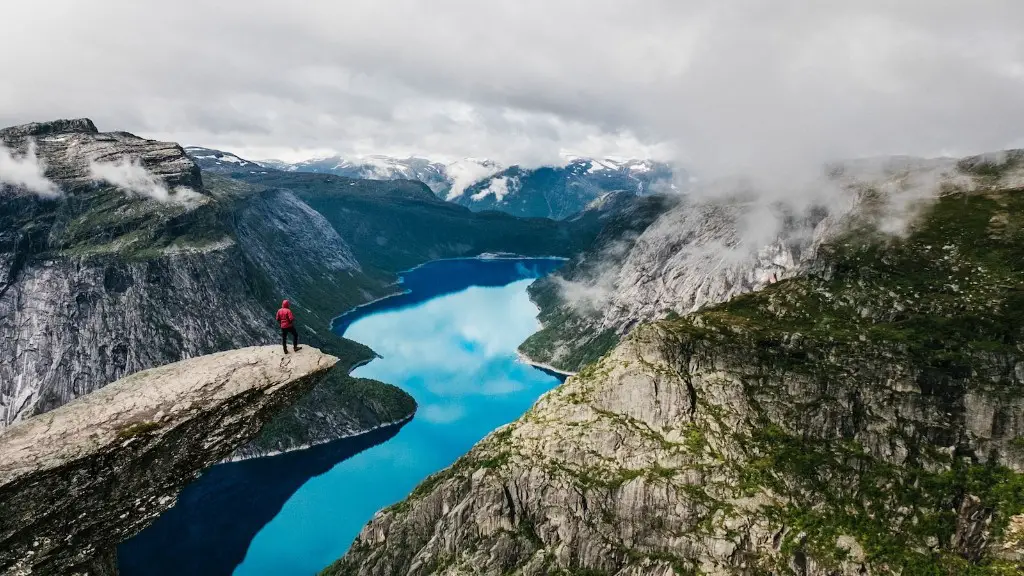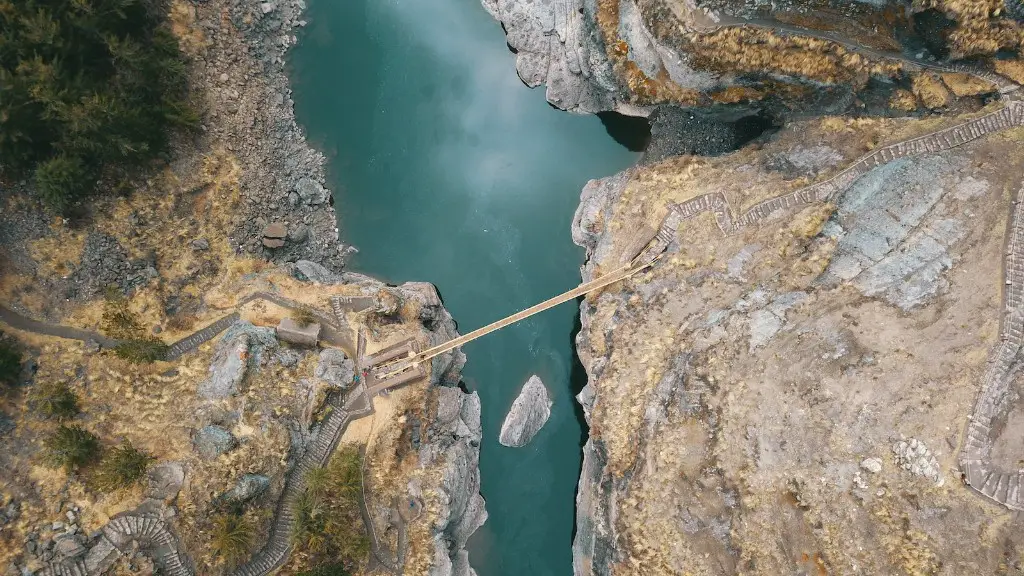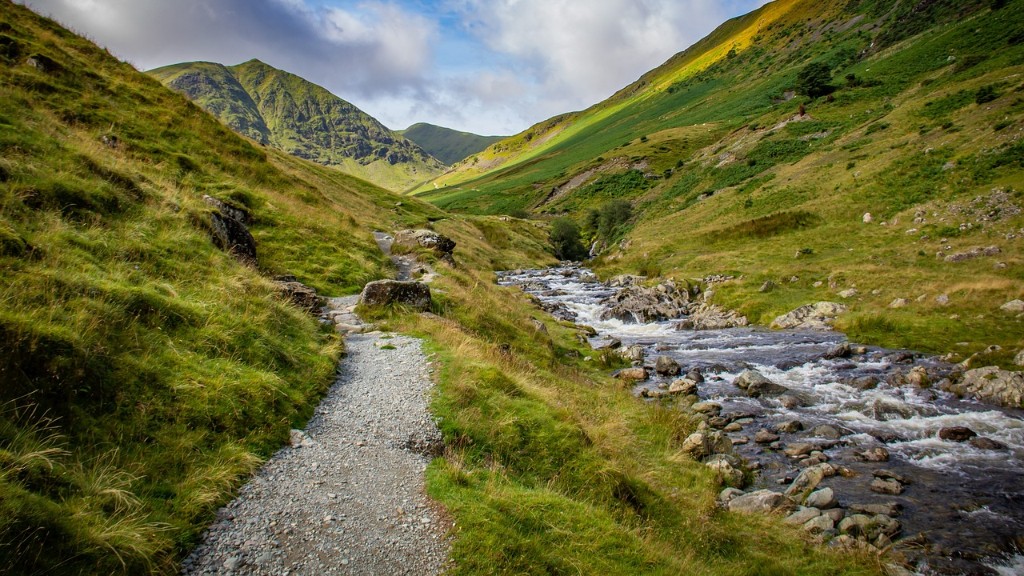Nile River: One of the Oldest Rivers in the World
The Nile River is one of the oldest rivers in the world and has a rich history that stretches back thousands of years. The Nile River is the longest river on earth, flowing 4,258 miles (6,853 km) northward through Egypt and then out into the Mediterranean Sea. It has its source in the highlands of Ethiopia, and its mouth on the Mediterranean coast of Egypt. The river has been a major source of water, food and wealth for many civilizations, and has played an important role in the development of various regions of Africa.
The origin of the Nile is uncertain, but it is believed to have originated from the Ethiopian highlands. The river follows the great east-west trade route of the ancient world, flowing through a northeast-southwest corridor that has been used for centuries for trade and communications. The river has brought significant wealth and resources to many civilizations, including the ancient Egyptians. The ancient Egyptians regarded the river as a source of life, worshiping it as a god. The river was also a source of transportation and communication and provided access to the interior of Africa, allowing different cultures to meet and interact.
The Nile River is a major source of irrigation, hydropower and industrial water. It is a vital part of the Egyptian economy and provides water for food production, clothing, and cultural activities. In recent years, the Nile has seen increased demand due to population growth, leading to competition for its resources and potential conflicts with riparian states. In addition, the river is also threatened by a range of environmental problems, including deforestation, overfishing, pollution, and climate change.
In terms of scientific research, the Nile has provided researchers with an important source of data on the river, its flora and fauna, and its human populations. The riverside has yielded evidence of early humans, the development of agriculture, and the origins of different civilizations. Its waters have also been used to measure water temperature, river flow, and sediment deposits. In addition, the river has been used for research on water resources management and conservation.
Today, the Nile River remains a vital resource for many countries in Africa, providing a source of sustenance, jobs, and recreational activities. Although the river continues to face threats from overuse and environmental degradation, its importance to the region cannot be overstated. It remains a symbol of the power of the natural world and is a reminder of the need to protect, preserve, and manage our precious fresh water resources.
Impact of Damming on Nile River
Throughout its history, the Nile River has been a major source of livelihood and cultural activities for many countries in the region. However, in recent decades, the river has been subjected to various forms of disruption. The most significant of these is damming, which has had a significant impact on the river’s flow, ecology, and environment.
The most notable of these projects is the Aswan High Dam, built in 1970 in Egypt. This dam has provided electricity for millions of people in Egypt, but it has also caused significant problems for the river. By blocking the flow of the river and preventing sediment from reaching the delta, the dam has caused the delta to slowly erode away. In addition, the dam has impacted the ecology of the river, as the reduced flow has diminished the habitats of many species of fish and other aquatic life.
The effects of damming on the river have been felt throughout the region. In Ethiopia, the construction of the Grand Ethiopian Renaissance Dam in 2016 has had a significant impact on the Nile’s water resources. The dam has caused water levels in the Nile to drop, impacting fish populations and agriculture. In addition, it has caused tension between Egypt and Ethiopia, as the latter has sought to secure the use of the Nile’s water for power generation and drinking water.
The disruption of the Nile River has had a devastating impact on the people and ecosystems of the region. In Egypt, the loss of agricultural land and fish stocks have led to major economic losses. In addition, the disruption of the river’s flow has caused severe environmental impacts, including the loss of wetlands and coastal habitats. The construction of the Aswan High Dam and the Grand Ethiopian Renaissance Dam have highlighted the need for careful management of the river’s resources and a greater recognition of the need to protect the river’s ecology.
International Cooperation to Manage the Nile River
In recent years, there has been a growing recognition of the need for international cooperation to better manage the Nile River. This has involved the signing of various agreements between riparian countries, seeking to better regulate the river’s flow and use. Such agreements are important for securing the Nile’s resources for the benefit of all countries involved, preventing conflicts over water use and allowing for the sustainable use of the river’s resources.
In 1999, 10 riparian countries signed the Nile Basin Initiative, which sought to better manage the water resources of the Nile. The initiative has enabled the countries to work together to develop and implement policies for water resource management, as well as to promote conservation and sustainable use. In 2015, the countries signed the Entebbe Agreement, which further strengthened collaboration and cooperation in managing the river’s resources.
In addition, other efforts have been made to better manage the river, including the launch of the Nile Equatorial Lakes Subsidiary Action Program in 2015. This program seeks to ensure the equitable sharing of the river’s resources, protect ecosystems, and promote the sustainable use of the river’s resources. It is a promising development for the region, as it seeks to bring about a more equitable and comprehensive approach to managing the river’s resources.
The management of the Nile River remains a complex and challenging task. A consensus needs to be reached between the various riparian states, and action must be taken to protect and conserve the river’s resources. Greater international cooperation is needed to ensure that the river’s resources are used sustainably and for the benefit of all people in the region.
Environmental Issues Facing the Nile River
The Nile River has been an important source of sustenance and livelihood for many people in the region for centuries. However, the river and its surroundings are now under increasing pressure due to human activities and environmental changes. A number of environmental issues are threatening the river and its environs, endangering its ability to support humans, animals, and plants.
The effects of climate change are of particular concern. Increased temperatures and changes to rainfall patterns are leading to unprecedented levels of floods and droughts, resulting in dramatic changes to the river’s flow. This has caused problems for agricultural activities and is threatening the habitats of many species of fish, plants, and animals.
Pollution is another major threat to the river. Agricultural runoff, industrial effluent, and untreated sewage have all impacted the river, leading to eutrophication and the depletion of oxygen in the water. In addition, discarded plastic and other debris have polluted the river and are endangering the health of aquatic organisms.
Overfishing has also had a significant impact on the river, leading to the depletion of fish stocks and threatening the livelihoods of fishers. The construction of dams and other development projects have also had a detrimental effect on the river, disrupting its flow and leading to the loss of wetlands and other areas of natural habitat.
It is clear that the Nile River is facing a range of environmental problems, and these must be addressed if the river is to remain a viable source of water and sustenance. A range of measures must be taken, including strict enforcement of pollution laws, conservation of natural habitats, and the development of sustainable fishing methods. Only by addressing these issues can the future of the Nile be secured.
Sustainable Use of the Nile River
The Nile River has been a major source of sustenance and economic activity for thousands of years. In recent times, however, the river’s resources have been under increasing pressure from population growth, climate change, and other forms of environmental change. To protect the river’s resources, it is essential that its use is managed in a sustainable fashion.
The most important step in this regard is to respect the rights of riparian states. All countries with a stake in the river’s resources must ensure that their actions are not detrimental to other states. This involves respecting equitable access rules, protecting the river’s ecosystems, and preventing pollution.
In addition, countries must ensure that they use the river’s resources in a sustainable manner. This includes pursuing renewable energy sources, avoiding over-extraction of water, and properly managing agricultural activities. It is also important to prioritize conservation and restoration efforts, such as replanting vegetation, restoring wetlands, and cleaning up pollution.
Sustainable use of the Nile River is essential for protecting its resources and ensuring its continued contribution to the region’s economy and livelihoods. It is essential that countries cooperate and take collective action to ensure that the river’s resources are managed in a sustainable fashion and that its ecosystems are preserved.
Conclusion
The Nile River is one of the world’s most important rivers, and has been an important source of sustenance, livelihood, and cultural activities for centuries. However, the river is now facing a range of environmental threats, including damming, pollution, and climate change. Sustainable management of the river’s resources is essential for protecting the region’s economies and livelihoods, and for ensuring the continued flourishing of the river’s ecosystems. International cooperation and collective action are needed to ensure that the river’s resources are used in a sustainable manner and that its unique ecosystems are preserved.





